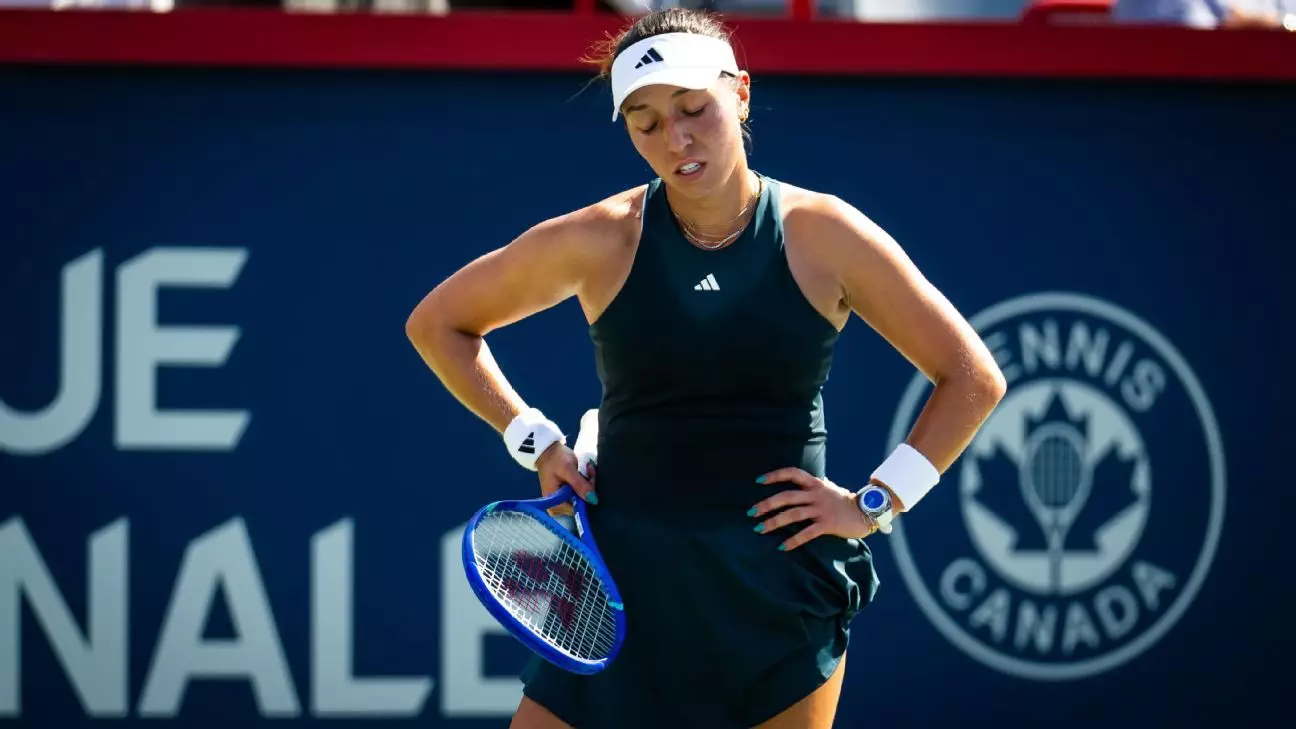In the world of professional tennis, rankings often dictate narratives, but on any given day, the impossible can become reality. The recent upset of two-time defending champion Jessica Pegula by Anastasija Sevastova exemplifies this phenomenon vividly. Sevastova, ranked a distant 386th due to injuries and time away from the game, defied the odds by dismantling a top-tier player like Pegula, a testament to resilience and unwavering determination. Her victory underscores a fundamental truth: experience, grit, and mental toughness can sometimes trump raw rankings and expectations. It is a dramatic reminder that in tennis, dominance is sometimes fleeting, and perseverance remains the ultimate weapon.
What makes Sevastova’s win even more remarkable is her resurgence after severe setbacks. Having endured a torn ACL and maternity leave, her journey back onto the court wasn’t just about physical recovery—it was about mental revival. Her confidence to challenge a top-10 player demonstrates that renewal is possible, even after the harshest setbacks. This victory isn’t just a personal triumph; it propels a broader conversation about the value of perseverance and the underrated power of seasoned players in a sport driven by youth and speed.
Embracing the Unexpected: The Role of Experience and Composure
Sevastova’s ability to stay composed amid chaos is an essential quality that often distinguishes winners from the defeated. Her composure in the face of adversity allowed her to capitalize on moments when Pegula’s consistency faltered. Breaking her six times illustrates not just skill but mental fortitude—an attribute that often favors veterans in high-pressure situations. The narrative here challenges the often-held notion that only young, physically dominant players are destined for success. Age, experience, and emotional stability can be equally, if not more, decisive.
Meanwhile, the tournament’s other results reinforce the idea that resilience can be displayed at any stage of a player’s career. Naomi Osaka’s steady performance, clinching the victory over Ostapenko, and Amanda Anisimova reasserting her confidence after recent struggles, highlight that seasoned athletes and emerging stars alike are continuously fighting personal battles. In a sport where the physical and mental demands are relentless, victories—whether expected or not—serve as powerful exemplars of inner strength, adaptability, and strategic mastery.
Challenging the Status Quo: The Aesthetic of Comebacks and Reinvention
One of tennis’s most compelling narratives is the art of the comeback, both on and off the court. Sevastova’s story exemplifies this beautifully. Her statement about seeing her loss as “unfinished business” resonates deeply within a competitive sport that often rewards resilience over raw talent alone. Her recent performances serve as proof that setbacks can be catalysts for reinvention, forcing athletes to dig deeper and harness their inner tenacity.
This narrative challenges the conventional obsession with young talent as the sole carriers of hope in tennis, emphasizing instead the importance of mental agility and experience. As the game continues to evolve with relentless athleticism, players like Sevastova remind us that reinvention is always possible—if not guaranteed. This mindset fosters a culture of grit, inspiring both players and fans to value persistence over perfection.
Meanwhile, top seeds like Swiatek and Keys displayed their own forms of resilience. Swiatek’s commanding victory after a shaky start exemplifies mental fortitude, while Keys’ ability to bounce back after losing the first set reflects strategic resilience. These moments illustrate that victory in tennis is as much about emotional stamina as it is about technical prowess.
Challenging Assumptions: The Future of Tennis Is Unpredictable
The tournament results serve as a potent reminder that tennis remains an unpredictable sport, where the line between dominance and defeat can shift in an instant. As the younger generation pushes to claim their space, older players continue to challenge notions about aging and decline. Sevastova’s victory, in particular, questions whether rankings and age should dictate a player’s chances.
In the broader context, this sparks an important conversation about the future of tennis—an arena where persistence, strategic resilience, and mental toughness may soon outshine raw athleticism. The sport’s evolving narrative suggests that the most compelling competitors are those who refuse to accept limitations, continuously reinvent themselves, and remain steadfast in the face of adversity.
The resilience demonstrated by seasoned players and up-and-coming talents alike underscores a vital lesson: in tennis, as in life, persistence and the capacity to adapt define success. The game is no longer just a test of speed and strength. It is a testament to the unwavering human spirit’s ability to rebound, reimagine, and triumph in the face of formidable challenges.

